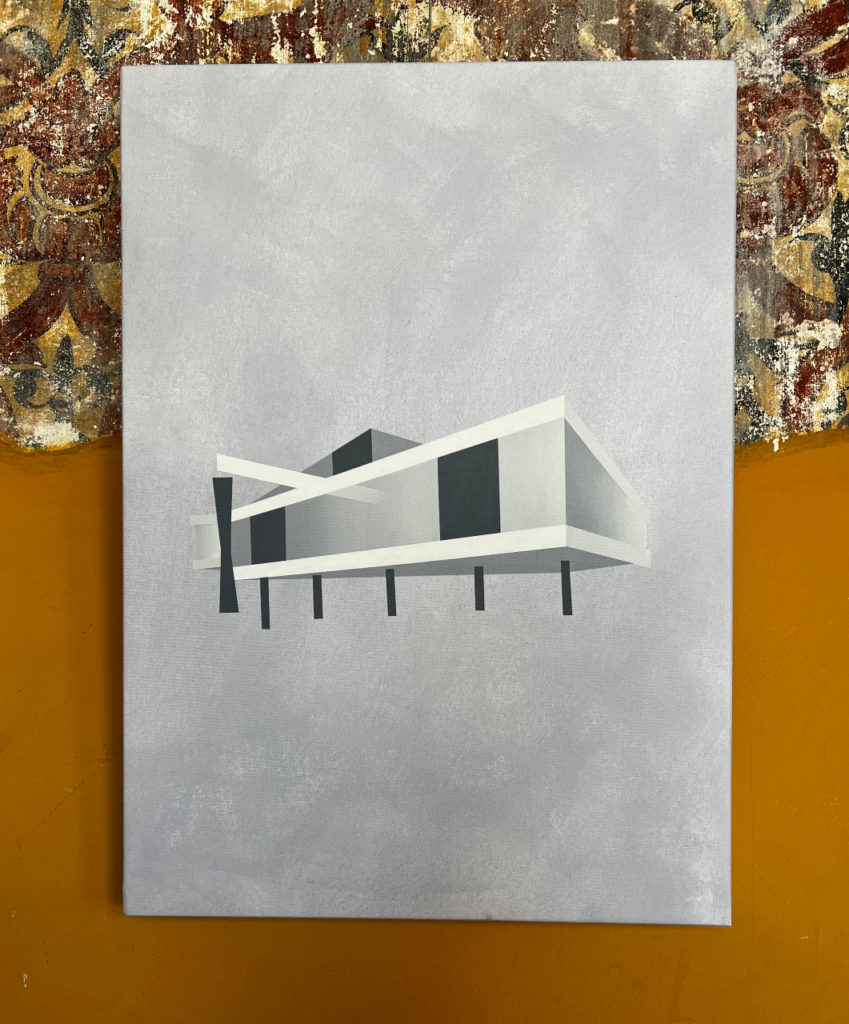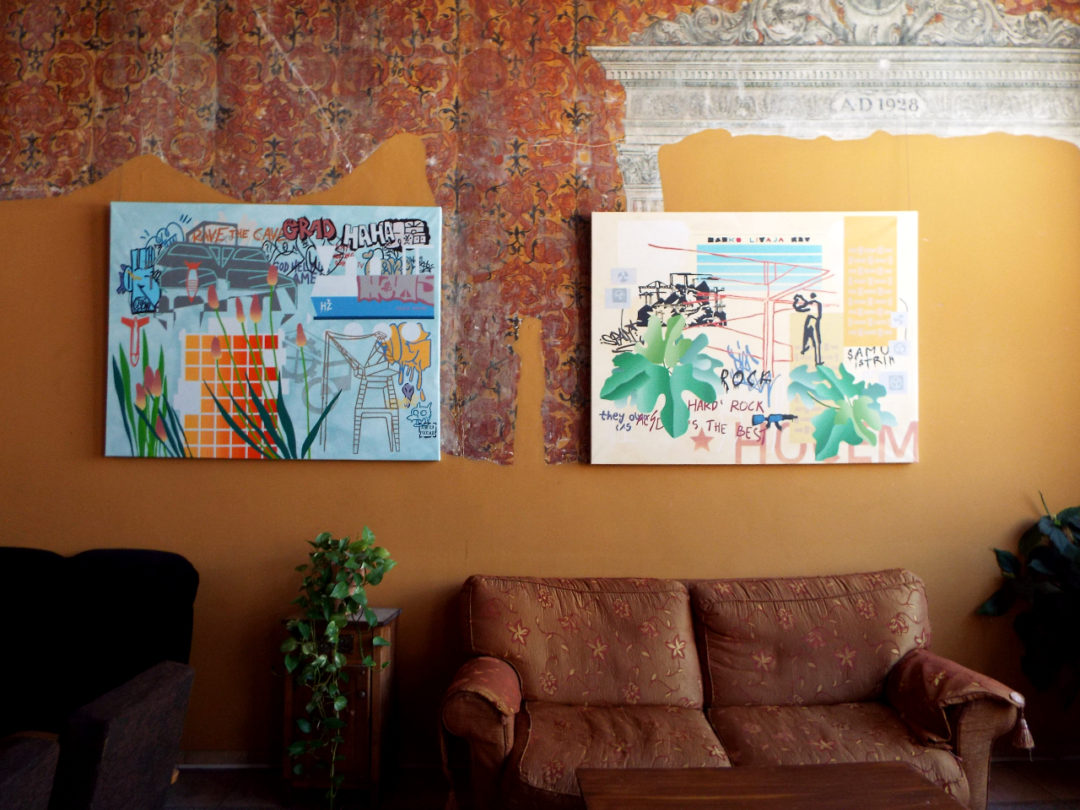Fernanda Figueiredo
Barbaric Protopia (If it’s been done before, perhaps we can do it again), Acrylic on canvas, 123 x 160 cm each, 2022
Barbaric Protopia (If it’s been done before, perhaps we can do it again), Acrylic on canvas ,70 x 50 cm each, 2022
Courtesy of the artist
Supported by IFA – Institut für Auslandsbeziehungen, Stuttgart
The synchronization of economic and cultural globalisation of aesthetics is a central theme in the work of Brazilian artist Fernanda Figueiredo (*1978). Starting from her own biography and thus from the influence of Bauhaus Modernism on contemporary Brazilian culture after 1945, Figueiredo deals with analogous themes in other cultures. The almost blind faith in progress, prosperity, and modernisation is evident not only in the numerous futuristic buildings from the Italo-Fascist period, but also in the pioneering Yugoslav architecture found in Pula and Rijeka. These buildings, erected during the Tito era and in many cases now in poor condition, are a reminder that architecture once had a broader social responsibility in shaping society. When Figueiredo deals with this loss in a group of seven paintings created especially for the 4th Industrial Art Biennial, she gives new relevance to the theme. Her message: It is important to return in the future to the qualities of these urbanistic settings.

Fernanda Figueiredo Barbaric Protopia (If it’s been done before, perhaps we can do it again), 2022. Photo by Labin Art Express.
Sinkronizacija ekonomske i kulturne globalizacije estetike središnja je tema brazilske umjetnice Fernande Figueiredo (*1978.). Polazeći od vlastite biografije, a time i od utjecaja modernizma Bauhausa na suvremenu brazilsku kulturu nakon 1945., Figueiredo se bavi sličnim temama u drugim kulturama. Gotovo slijepa vjera u napredak, prosperitet i modernizaciju očituje se ne samo u brojnim futurističkim građevinama iz italofašističkog razdoblja, već i u pionirskoj jugoslavenskoj arhitekturi Pule i Rijeke. Ove zgrade podignute tijekom Titove ere, i mnoge od njih danas u lošem stanju, podsjetnik su da je arhitektura nekada imala širu društvenu odgovornost u oblikovanju društva. Kad se Figueiredo bavi tim gubitkom, kroz sedam slika nastalih posebno za 4. Bijenale industrijske umjetnosti, ona daje novu važnost ovoj temi. Njezina je poruka: Važno je u budućnosti vratiti se kvalitetama ovih urbanističkih sredina.

